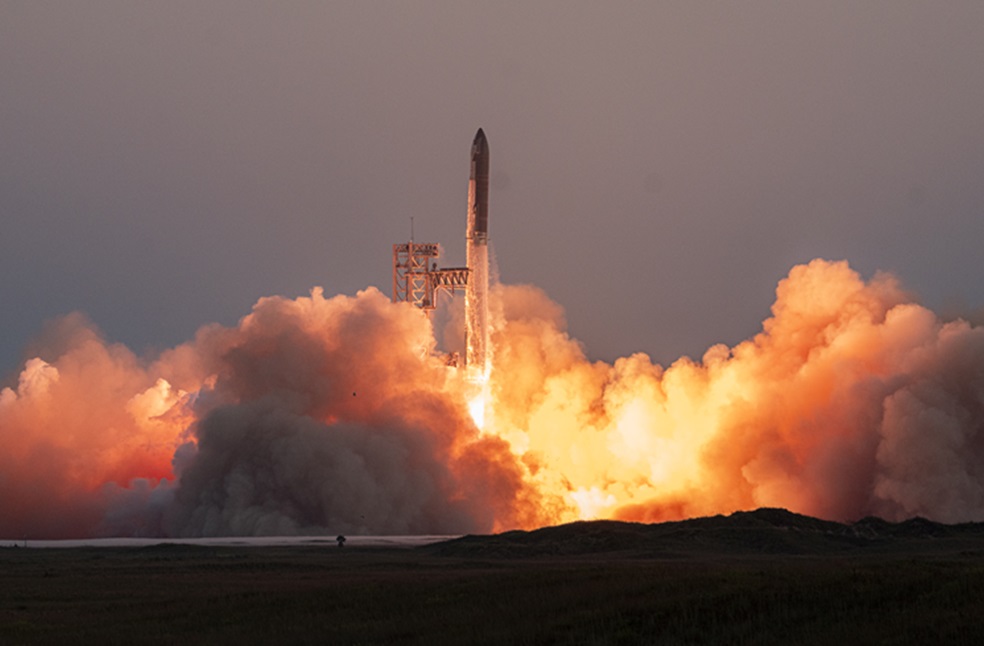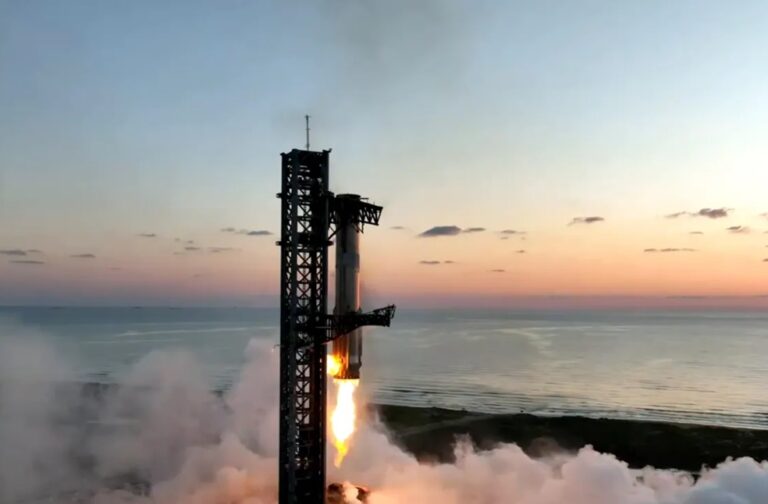United States: SpaceX marked a significant milestone with the successful recovery of its ‘Super Heavy’ first-stage booster using giant mechanical arms first in aerospace history during the fifth test flight of its Starship rocket.
The mission, conducted from SpaceX’s Boca Chica facility in Texas, showcases the company’s rapid strides in developing a fully reusable vehicle for lunar and Mars missions.
The Super Heavy booster lifted off, propelling the Starship’s second stage toward space. After separating at an altitude of approximately 70 km (40 miles), the booster initiated its return to the launch site- a key objective of the test.
To execute the catch, the 71-meter-tall Super Heavy re-ignited three of its 33 Raptor engines to slow its descent. The booster then steered itself using grid fins, targeting the launch tower where it had originally taken off.

The launch tower, standing over 400 feet tall-taller than the Statue of Liberty, features two enormous metal arms designed to catch the rocket. As the Super Heavy approached, the metal arms hooked onto small protruding bars beneath the grid fins, locking the booster securely in place.
“The tower has caught the rocket!!,” SpaceX CEO Elon Musk announced drawing applause from engineers watching the event live.
This catch method is a bold engineering feat and represents another step forward in SpaceX’s mission to develop a fully reusable launch system capable of deep space travel. The reusability of both rocket stages is crucial to SpaceX’s vision of reducing spaceflight costs and making human missions to Mars and the Moon more feasible.
Meanwhile, the Starship’s second stage, traveling at 17,000 miles per hour, continued its journey into space. It reached an altitude of 89 miles before re-entering Earth’s atmosphere for a controlled splashdown demonstration in the Indian Ocean, near western Australia.
Thousands of distinct vehicle and pad criteria had to be met prior to catching the Super Heavy booster. Thanks to the tireless work of SpaceX engineers, we succeeded with catch on our first attempt. pic.twitter.com/6wa5v6xHI0
— SpaceX (@SpaceX) October 13, 2024
During re-entry, onboard cameras captured superhot plasma enveloping the rocket in a glowing pinkish-purple hue. This time, Starship’s 18,000 heat-shield tiles, improved since a previous test in June remained intact, showing better resilience against the hypersonic friction of re-entry. Starship smoothly ignited one of its six Raptor engines to reorient itself for a simulated ocean landing.
This mission comes after the US Federal Aviation Administration (FAA) granted SpaceX the necessary launch license. The license approval followed weeks of discussions between the FAA and SpaceX, amid regulatory concerns and fines related to the company’s Falcon 9 rocket operations.
The recent test reinforces SpaceX’s commitment to refining Starship, which was first unveiled by Musk in 2017. Although the rocket has experienced multiple explosions throughout its development, it successfully completed its first full test flight in June.
With Starship positioned as the centerpiece of NASA’s Artemis programme and future Mars missions, SpaceX’s latest achievement advances its goal of building a reusable spacecraft capable of revolutionising human space exploration.



